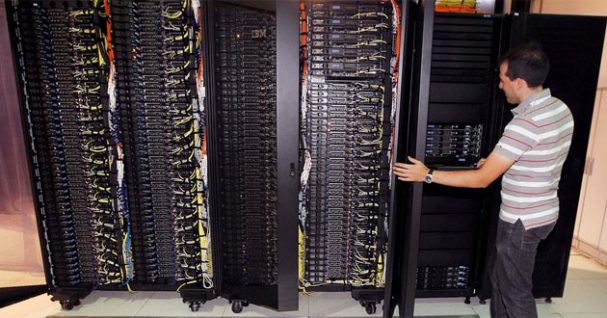We’re spotlighting users and operators who are on the front lines deploying OpenStack in their organizations to drive business success. These users are taking risks, contributing back to the community, and working to secure the success of their organization in today’s software-defined economy.
Today, we sit down with Álvaro López García at The Institute of Physics of Cantabria (IFCA) in Spain. IFCA is using OpenStack to support scientists and researchers who are working to understand the components of nature, from elementary particles to the largest structures of the universe.

Describe how are you using OpenStack. What kinds of applications or workloads are you currently running on OpenStack?
The IFCA is part of the CSIC, the Spanish National Research Council, the biggest research institution in Spain, so our cloud resources are mainly focused on supporting scientific and academic research. We were already providing Grid, HTC and HPC resources to the scientists, and we wanted to explore the possibilities of cloud computing to see if it was feasible to support all of the use cases.
What has been the biggest benefits to your organization as a result of using OpenStack?
The adoption of OpenStack has given us several benefits.
On the one hand, we provide scientists with Cloud IaaS resources directly. That gives them the flexibility to self service and deploy their own infrastructure, using the software and configurations of their choice. In the past, they had to stick to the software configuration that we offered in our clusters. We had several use cases in the past where we found that this fact hindered they research, since they had to adapt their applications to our infrastructure. Now it is possible for them to come and deploy their very own software configuration. Also, the self service provisioning was something not possible in the past – if some group had a special request it was not possible to satisfy it without a planned intervention from the IT people (and this was not always possible).
We are also using it within the IT group to internally manage our computing infrastructure. This way, for example, we can easily deploy and roll out new resources into our HTC, HPC and Grid computing clusters. This has given us a shorter provisioning time and an ease of management, since OpenStack is taking care of the deployment, not us.
Last, but not least, it has opened the door to new collaborations with other research institutions. We are involved in several research projects to explore how scientific computing can leverage cloud computing advantages.
What is a challenge that you’ve faced within your organization regarding OpenStack, and how did you overcome it?
We are running a rare setup for an OpenStack cloud, that is the combination of libvirt and Xen (not XenServer). We were running Xen’s virtualized infrastructure in the past, so we felt comfortable and had experience using it and we decided to use it on the new cloud testbed. Unfortunately, there is not enough CI testing for this hypervisor, although there were some efforts in the past to deploy an infrastructure specific for Xen. As a consequence, we have faced and patched several bugs affecting libvirt and Xen. In each new release upgrade we carefully check that everything is working as expected. The good part of this is that we try to contribute everything back to the project.
How has your team’s OpenStack deployment grown and developed?
We started with a few decommissioned nodes to compose a small testbed during the OpenStack Cactus release (if I recall correctly). Since then, we have been integrating almost all of our resources (except some legacy nodes) into the cloud infrastructure. Our computing nodes are 99% running on top of OpenStack. Currently we are trying to integrate our existing storage infrastructure into the cloud, both for serving volumes to the compute
nodes (i.e. Cinder) and for serving BLOB storage (i.e. Swift).
If you run an OpenStack cloud and would like to be a contributor to Pass the Mic, email us with the subject line: Pass the Mic.
- Exploring the Open Infrastructure Blueprint: Huawei Dual Engine - September 25, 2024
- Open Infrastructure Blueprint: Atmosphere Deep Dive - September 18, 2024
- Datacomm’s Success Story: Launching A New Data Center Seamlessly With FishOS - September 12, 2024

)







